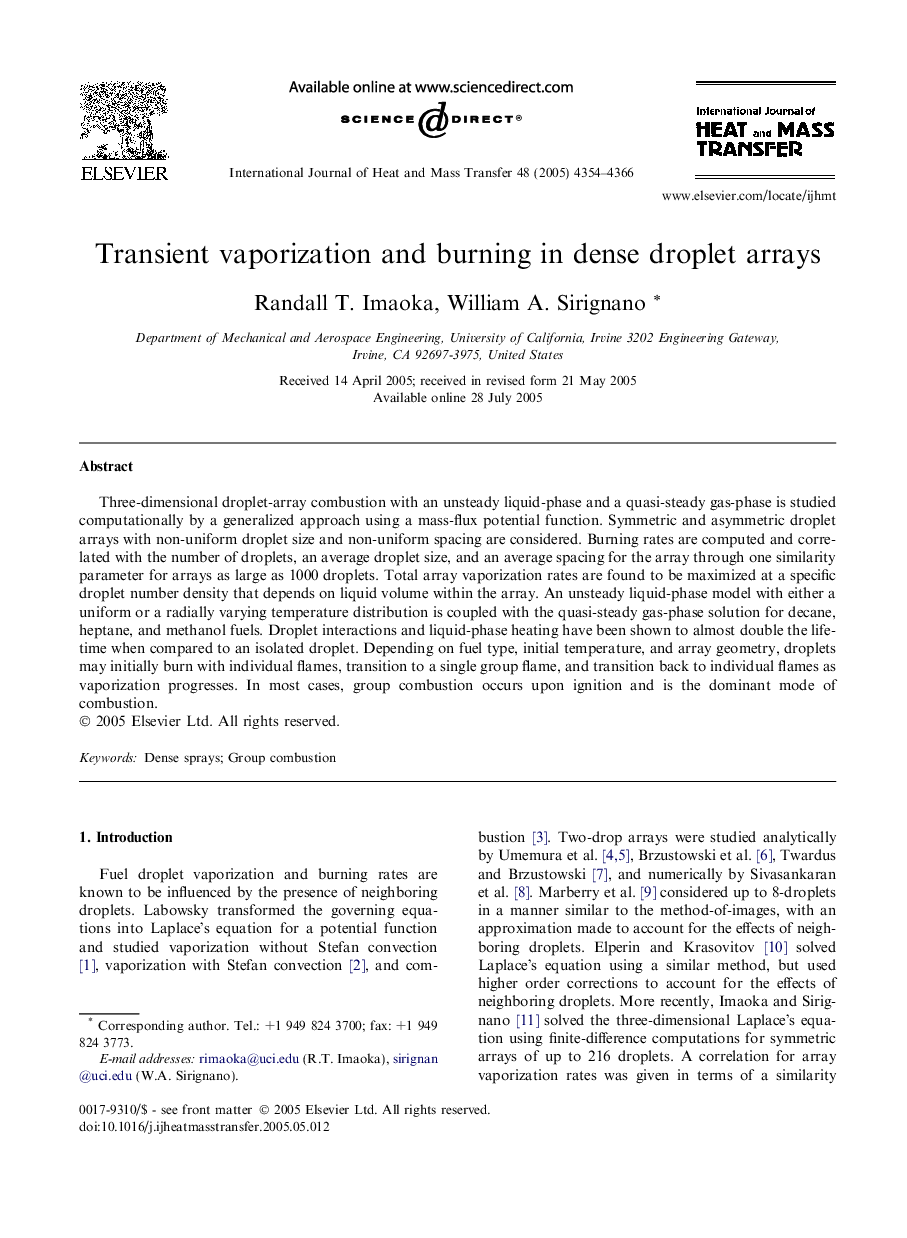| Article ID | Journal | Published Year | Pages | File Type |
|---|---|---|---|---|
| 662764 | International Journal of Heat and Mass Transfer | 2005 | 13 Pages |
Abstract
Three-dimensional droplet-array combustion with an unsteady liquid-phase and a quasi-steady gas-phase is studied computationally by a generalized approach using a mass-flux potential function. Symmetric and asymmetric droplet arrays with non-uniform droplet size and non-uniform spacing are considered. Burning rates are computed and correlated with the number of droplets, an average droplet size, and an average spacing for the array through one similarity parameter for arrays as large as 1000 droplets. Total array vaporization rates are found to be maximized at a specific droplet number density that depends on liquid volume within the array. An unsteady liquid-phase model with either a uniform or a radially varying temperature distribution is coupled with the quasi-steady gas-phase solution for decane, heptane, and methanol fuels. Droplet interactions and liquid-phase heating have been shown to almost double the lifetime when compared to an isolated droplet. Depending on fuel type, initial temperature, and array geometry, droplets may initially burn with individual flames, transition to a single group flame, and transition back to individual flames as vaporization progresses. In most cases, group combustion occurs upon ignition and is the dominant mode of combustion.
Keywords
Related Topics
Physical Sciences and Engineering
Chemical Engineering
Fluid Flow and Transfer Processes
Authors
Randall T. Imaoka, William A. Sirignano,
